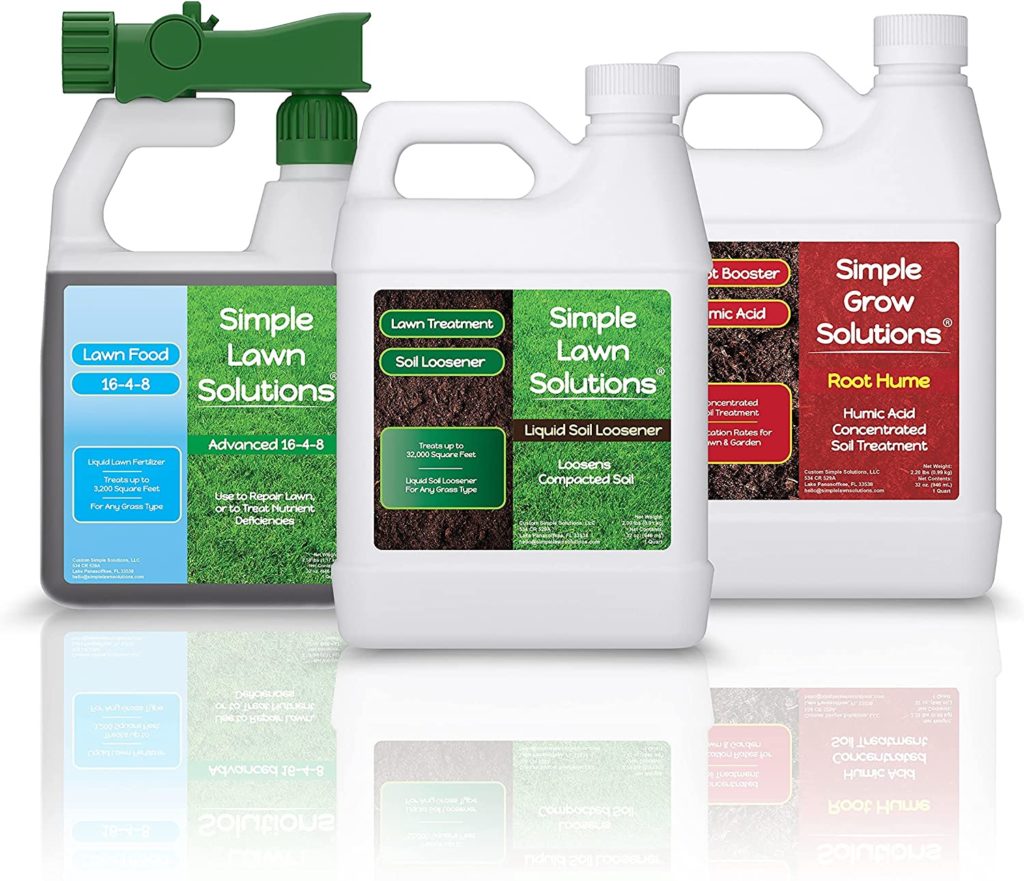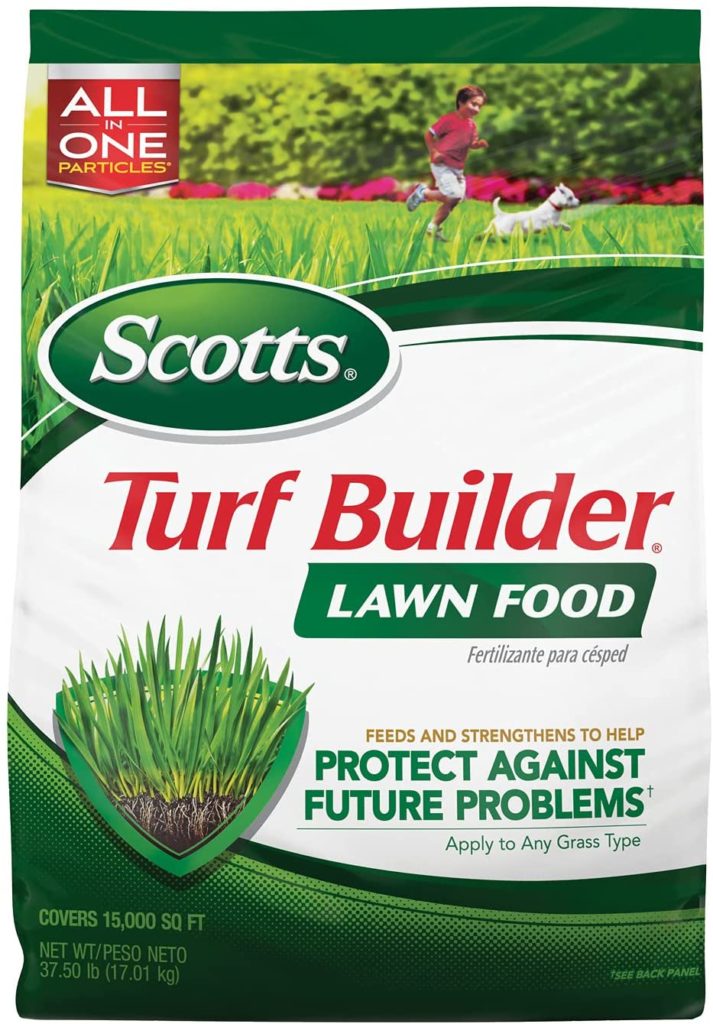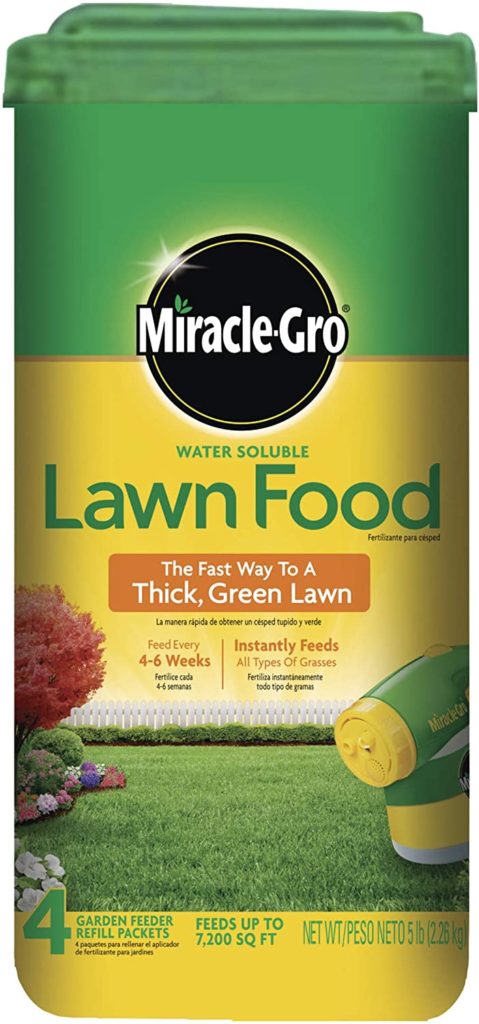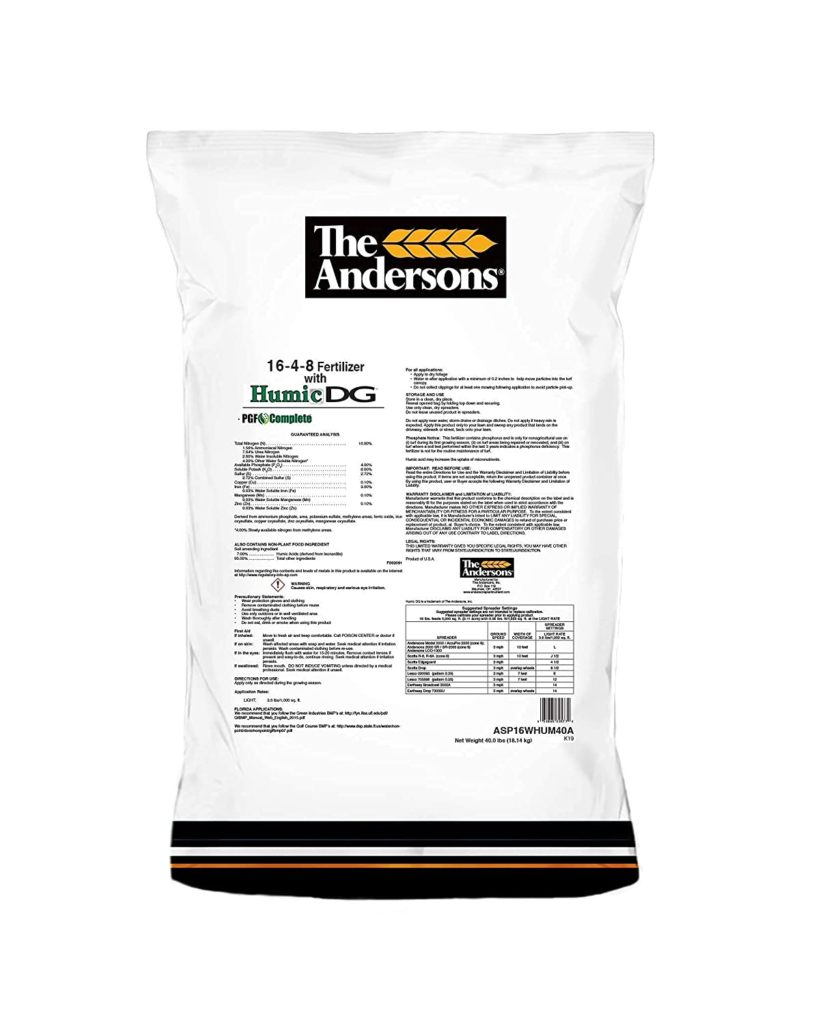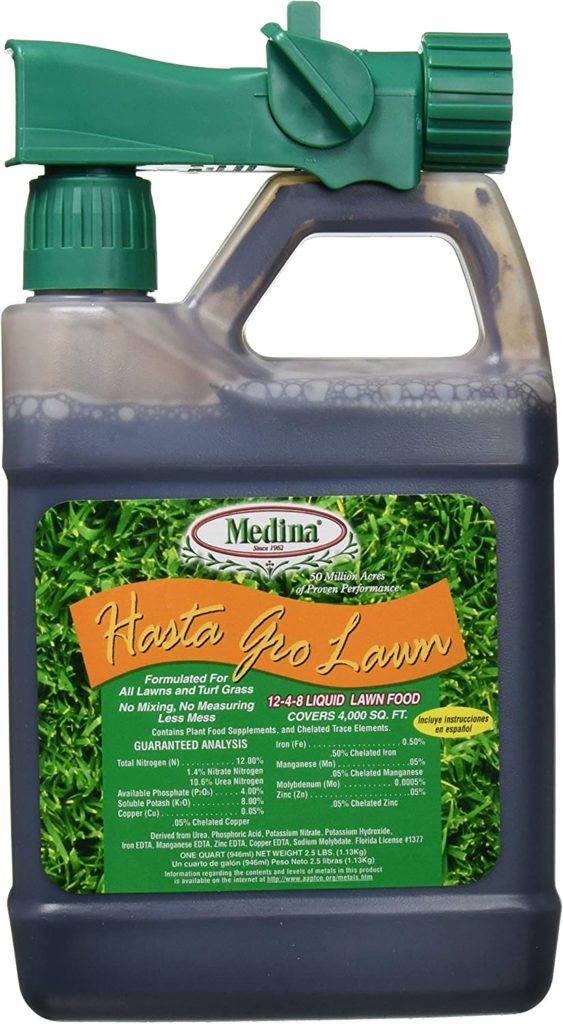The use of fertilizer is an absolute must throughout the summer. Maintaining the health of your yard requires taking measures to stop the spread of major harm. If you do not fertilize your lawn regularly, it will become unhealthy and awful. As a result, summer lawns need careful consideration of the most effective fertilizer options available.
It is just as crucial to have a working knowledge of the nutrients and that you need to apply fertilizers appropriately to your lawn. Hence, to keep lawns, gardens, and plant life in forested areas in good condition, different fertilizers are required at different periods of the year.
The numbers 6-0-0, 10-0-4, and 15-0-8 are the optimal numbers for lawn fertilizer throughout the summer. The amount of nitrogen required by warm-season grasses is often much less than that required by cool-season grasses.
First things first, you need to determine what kind of fertilizer your lawn needs and how much of that fertilizer you will need to buy and spread. The findings you seek might likely be found through conducting a soil test. Either the test will be sent to you by the local extension agency, or you will be able to conduct the test independently with the assistance of an appropriate kit. You can make a wise decision about lawn fertilizer if you have the necessary information at your hand.
Best Fertilizers for Grass in Summer
Knowing what type of soil you have is important before choosing a fertilizer for your lawn. Clay-rich soils need less fertilizer than sandy soils because clay holds more water. Your garden may employ potting mixes that already include fertilizer, so you’ll have to be careful not to overfeed your plants. The following list is the top five best fertilizers to use on grass throughout the summer.
1. Simple Lawn Solutions Liquid Fertilizer
The Simple Lawn Solution is a well-known product for the lawn sector. The firm has spent the better part of the last thirty years developing a complete line of thirteen lawn care products. In order to better understand their work, consider this fertilizer as a final product. If you apply a fertilizer with high-quality feed-grade components like organic seaweed and fish emulsion, this provides your lawn with the nutrients it needs to create lush, green leaves.
The development of grass is best accomplished with an NPK ratio of 16-4-8. The product was awarded first-place accolades for a number of different reasons. You are not restricted to just using fertilizer on Tall grasses; you may also use it on other types of grass. It is also capable of managing Kentucky bluegrass and Bermuda, St. Augustine, Zoysia Buffalo and Centipede, and Fescue. Utilizing feed components of a high grade allows for enhancing the soil’s existing nutrients.
As a supplementary choice, it is also made available in the form of a liquid that may be sprayed. Because of this, the roots and leaves of your grass can take in nutrients. Because of the very high concentration, it is the best option available.
Features:
- NPK ratio: 16-4-8.
- Fertilizer in a liquid form.
- Fish and seaweed are components of the fertilizer.
- Quick-release.
Direction for Usage:
It is a fertilizer that has already been blended, and it may be sprayed straight from the bag it came in. After attaching the hose to the device’s output and spraying the surface with the solution, the solution should be spread out in an even layer. It is essential that you do not forget to water your lawn during the first twenty-four hours after applying the product.
Pros and Cons of Simple Lawn Solutions Liquid Fertilizer:
- The application is even and consistent
- Phosphorus can be better absorbed in the grass
- The best option for new lawns
- It’s quite easy to use
- A product with a fast-release mechanism
- Costly in terms of both setup and application
- It should be used regularly
2. Scotts Turf Builder Lawn Food
In order to maintain the richness and freshness of your lawn, Scott’s Turf Builder Southern Lawn Food was developed specifically for application throughout the dry and hot summer months. This fertilizer provides a steady supply of nitrogen, which supports the development of robust, dense, and lush grass.
The usage of nitrogen fertilizers may cause the grass to become brown and burn. Still, Scotts’ All-in-One Particles prevent this by distributing nitrogen and other nutrients uniformly throughout the grass. Utilizing fertilizer from Scotts to kick off a brand-new lawn is a terrific strategy to ensure that your grass is healthy from the very beginning of its life. It fosters rapid growth, which may result in grass that is up to 70 percent thicker and 35 percent quicker than grass that has not been treated.
An NPK ratio of 24-25-4 has the potential to encourage faster root development as well as stronger blades. The lawn grass cultivar reacts quite well to this approach. There are other options available besides making use of this fertilizer for the growth of new plants. In addition to this, it is effective for use with lawns that have already been planted, grass plugs, and even sod.
Features:
- Compound: Granular fertilizer.
- The NPK ratio is 32-0-10.
- Slow-release.
- Effectiveness lasts for six weeks.
- Weight: 14 pounds.
- A coverage area of 5,000 square feet.
Direction for usage:
You need to water the grass thoroughly if you want to get down to the roots of the grass. The granules dissolve very instantaneously in the soil, and their effects may be seen immediately afterward.
Continue to apply the solution to a damp area and provide it with nutrients until the soil becomes green. Before using the tool, make sure you’ve read the instructions carefully to know exactly how much to pour in.
- Perfect for lawns and gardens in warm-season grasses
- Phosphorus-free
- An excellent choice for a wide variety of lawns
- The capacity to withstand extremes of heat and dryness
- Within three to fourteen days, you’ll see a noticeable change in the grass
- Over-fertilizing the grass might result in damage
- Compared to other slow-release fertilizers, this one has a shorter shelf life
- Phosphorus deficiency would make this a bad choice
3. Miracle-Gro Water Soluble Lawn Food
It is unnecessary to use a piece of spreading equipment or a garden sprayer with a pump if you want to apply this Miracle-Gro Lawn Food since it is available in water-soluble granular form. In its place, you might try applying the product with the help of the Miracle-Gro Garden Feeder. You may put these granules to use by choosing one of the fertilizer packets included in the box and placing it in the sprayer’s basin.
The package contains a total of four different fertilizer packets. A single package has the potential to cover up to 1,800 square feet of grass. To ensure that the 30-0-6 NPK fertilizer is applied equally, thoroughly wet the grass and then spritz it with water. Because of the large amount of nitrogen included in Miracle-Gro Lawn Food, the color and density of your lawn grass will be enhanced, and the grass’s overall health will be improved. It will take four packets to adequately nourish a lawn that is 7200 square feet in size.
This water-soluble solution is suited for use in smaller and medium-sized yards, where it is possible to reach every part of the yard with a hose.
Features:
- NPK ratio: 30-0-6.
- Granular type fertilizer.
- Quick-release.
Direction for usage:
In a Watering Can, just add one tablespoon of Miracle-Gro to each gallon of water in the mixture. For already well-established lawns, you should water them once every two to three weeks with a gallon of water for every 15 square feet of the grass surface. In roughly 12 minutes, a single feeder refill package may cover around 1000 square feet of area.
- Separated into small, discrete packages
- Easily dissolves when water is added to it
- Season-proof container
- Use with a garden feeder for optimum results
4. The Andersons Professional PGF Complete Fertilizer
The production of this fertilizer by Anderson’s required the use of non-hazardous inorganic components such as ammonium phosphate, urea, potassium sulfate, and ferric oxide, among other ingredients. In addition, these compounds include 16% nitrogen, 4% phosphorus, 8% potassium, 2.72 % sulphur, 3% iron, 0.10 % copper, 0.10 % manganese, and 0.10 % zinc. To the best of their ability, it seems that the company did a fantastic job of ensuring that the grass received the appropriate quantity of micronutrients.
Except for a trace quantity of nitrogen, almost all of the nutrients in this fertilizer are soluble in water. The only exception is nitrogen. Tall lawn grass may continue to rely on the fertilizer for up to eight weeks, although this depends on the slow-release nitrogen provided by the fertilizer. Because of the rapid and sustained feeding processes that grass undergoes, slow-release fertilizers like this one may prove to be quite beneficial to the grass.
Aside from that, the nutrient-rich combination that is included in the composition of this medium guarantees that your plants will grow equitably. Because the nitrogen content of the fertilizer is lower in those areas of the lawn where the grass is less green and apparent, it is essential to apply additional nitrogen particles to those areas of the lawn. In addition, the actions that you are doing will not harm the plants that you have.
Features:
- NPK ratio: 16-4-8.
- Slow-release.
- Granules.
- Applying it is a breeze
Direction for usage:
Prior to applying the product, you must first mow the lawn. Apply to regions of dried plant leaves. You must wet it down thoroughly once you’ve applied it. You should wait for at least one mowing before picking up any particles in the clippings that have been gathered after the application to avoid this.
On cool-season grasses, use 50-75% of the usual rate throughout the summer. The normal treatment rate should be reduced by 50% in centipede lawns. PGF Complete may be applied every six to eight weeks throughout the growing season.
- Extra-fine particles double the number per square foot of ordinary particles
- There is a direct correlation between how many particles are there and how equally scattered they are
- A lower nitrogen content allows for more particles per square foot to be applied
- Feeds for up to eight weeks on a low dosage
- For increased soil quality and nutrient uptake, apply Humic DGS
- It’s a little expensive
5. Medina – Ready-to-Spray HastaGro Lawn
Since its founding in 1962, Medina Agricultural Products Co. Inc., a company that is in the business of producing microbe stimulators, has been operating continuously ever since. One of the most efficient lawn food products that this firm manufactures is called Medina HastaGro Lawn food.
This fertilizer contains many components that were manufactured by humans, including urea, phosphoric acid, EDTA iron, and sodium molybdate. Each one of them has both macronutrients and micronutrients that are derived from the exact same source.
Due to the simplicity with which the fertilizer dissolves in water, it will not take long after application for it to start providing nutrients to your grass. Increasing the amount of chelated iron, manganese, and zinc that is present in this lawn fertilizer will result in extra benefits.
It has been shown that humic acid is an efficient stimulator for forming roots in plants. Because of this strategy, it is anticipated that the soil’s ability to absorb nutrients and its level of microbial activity and resistance to drought would all increase. The addition of 0.50 percent humic acid to this lawn feed represents a significant advancement in the field.
When the Medina Soil Activator is used, the organisms that live in the soil can have a better chance of prospering. Because of this, lawn food boosts the fertility of the soil, turning it into an environment that is perfect for the growth of grass on lawns.
Features:
- NPK ratio: 12-4-8
- Coverage for an area of up to 12,000 square feet
- Slow-release
Direction for usage:
You should do this throughout the spring for four weeks by filling the end of the hose with water, setting the mix ratio to fifty percent, and spraying it once a week over those four weeks. For optimal results, use once a month throughout the growing season.
- There is a guarantee of instant results
- Outstanding coverage
- The absorption of nutrients by grass is very rapid and efficient
- Stimulate soil microbes
- No assembly is needed
- It’s a little on the pricier side
Frequently Asked Questions:
The most efficient way to distribute fertilizer is to use a sprayer with a pump to apply liquid fertilizer and a spreader to provide granular fertilizer. This will ensure that the fertilizer is evenly distributed. For water-soluble fertilizer, a hose-end fertilizer dispenser is the best option.
Yes. Precautions should be taken in this situation since the fertilizer might be lost if water is still running off the grass after it has been applied.
There are some times of the year when you should not fertilize your lawn. It is not good to fertilize your lawn while the sun is beating down on it since it might burn the grass. The late afternoon or early evening is often considered the best time to apply fertilizer to a lawn. Of course, every lawn is unique in its way. If you have a lot of shade or tree cover, the time of your fertilizer application may be more unpredictable.
Mowing and raking the grass are usually recommended before applying lawn fertilizer. It is important to hydrate your lawn and eliminate debris before fertilizing it. When excess debris is removed from a garden by mowing and raking, the soil may be exposed to fertilizer with more ease. When you hydrate your lawn, you create an opening in the turf that allows fertilizer to penetrate the soil and reach the grassroots more easily.
Conclusion
Your landscaping should include grass since it is an essential component. Sometimes, it can seem yellow or sparse because of drought and other environmental factors. When you water it, you also need to give it the appropriate fertilizer to help it grow.
Nevertheless, it is up to you to determine which course of action is most appropriate given the circumstances of your case. You need to pay close attention to the vitamin content of the food you feed to avoid the risks associated with overheating.
These treatments will not affect the grass seed you use or damage an already established lawn. They are also helpful in weed control, particularly in the treatment of grasses. To establish the temperature of the soil at which grass should be grown: a soil test and a thermometer should be used.

